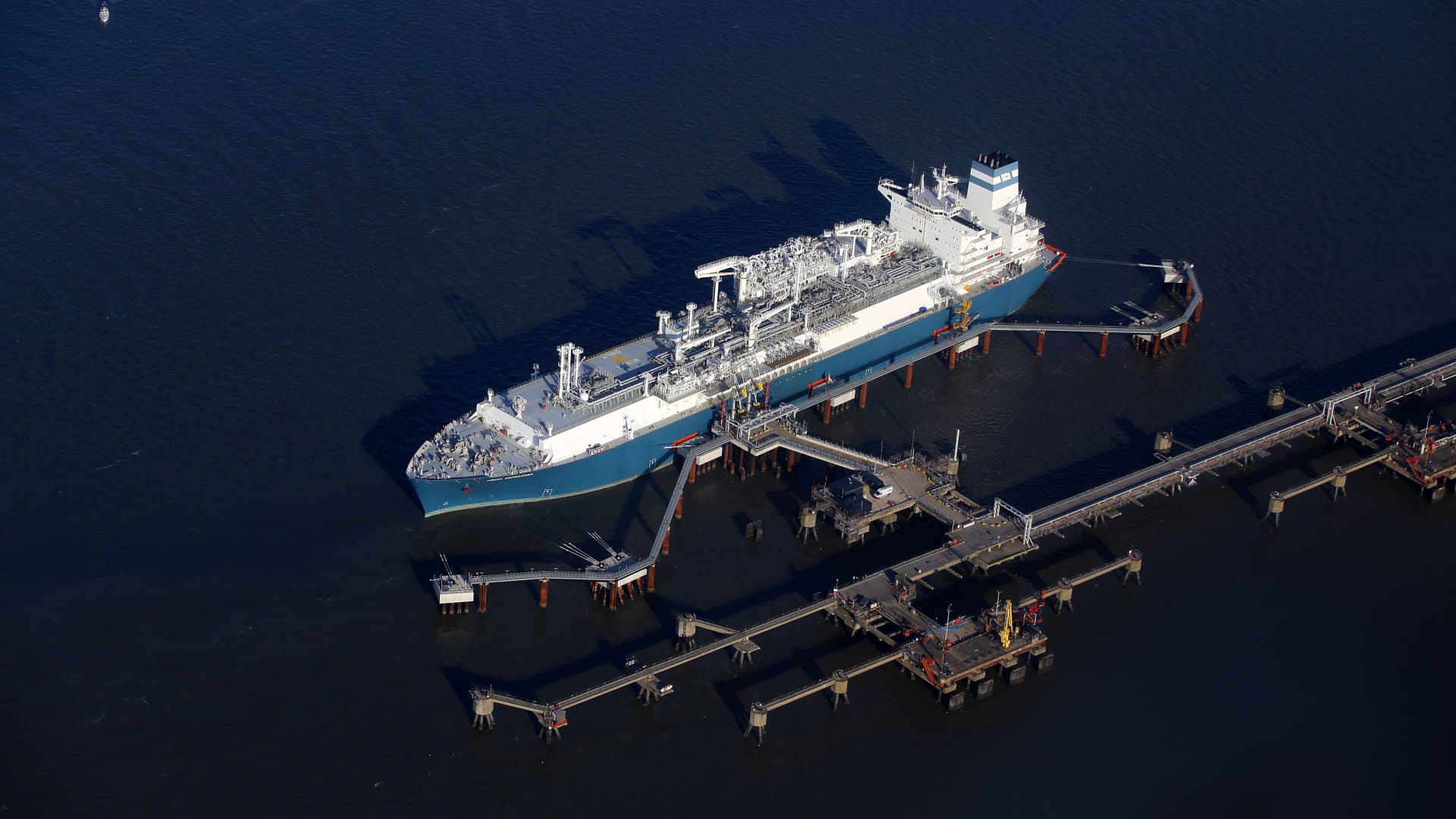Hydrogen Reality Check: We Need Hydrogen â But Not for Everything

The Myth: Hydrogen Is a No-Regrets Solution for Every Sector
Hydrogen’s versatility as a decarbonization solution has created a lack of consensus and clarity as to where it is truly needed. Hydrogen is sometimes described as the “Swiss Army knife” of decarbonization, with a role to play in nearly every sector, as it can be burned to generate electricity or heat, serve as a carbon-free input to produce “green” steel and fertilizer, and power everything from passenger vehicles to deep-sea cargo ships.
The Reality: Hydrogen Should Be Prioritized for “Hard-to-Abate” Sectors
In theory, hydrogen can indeed be used to decarbonize almost every sector. But just because it can, doesn’t mean it should. As one of several tools in the decarbonization toolbox, hydrogen should be prioritized in uses where energy efficiency and direct electrification are not possible. In particular, hydrogen’s potential to decarbonize the hardest-to-abate sectors quickly and cost-effectively makes it a necessary part of the clean energy transition.
One of the factors constraining global decarbonization is the scarcity and value of renewable electricity, of which is used to produce “green” hydrogen. Already the world needs vastly more clean electricity infrastructure, as power consumption in 2050 is expected to double from population and economic growth alone — and only 10 percent of electricity today comes from solar and wind. Add in the electricity required to make green hydrogen to decarbonize heavy industry and transport, and power consumption could triple. Given this backdrop, at a macro level it is important to prioritize reducing electricity consumption and using renewable electricity most efficiently. As such, many of today’s micro-level business cases of hydrogen for heating buildings, generating power, or fueling light-duty vehicles are better suited for investments in energy efficiency or direct electrification (see Exhibit 1 below).
However, there are several applications where energy efficiency and direct electrification are cost prohibitive, impractical, or simply impossible. Enter hydrogen. Given its flexibility, technological maturity, and relative low cost, hydrogen is one of the primary solutions to decarbonize the so-called hard-to-abate sectors such as steelmaking and shipping.
The Best Tool for a Difficult Job
The specific applications where hydrogen shines can vary by geography, especially as several developed economies are land-constrained and limited in their ability to build out renewable capacity. But even before considering real-economy constraints, there are several no-regret, high-priority applications of hydrogen that should be a core focus of policies and investment today: fertilizer production, petrochemicals and refining, steel production, maritime shipping, and, in some markets, long-distance heavy-duty transport via both rail and trucks. These sectors all need hydrogen to decarbonize, are technology-ready to transition, and contribute substantially to global emissions. In time, hydrogen is likely to expand beyond these core applications.
Exhibit 1 illustrates the carbon abatement per kilowatt-hour (kWh) of zero-carbon electricity, either used directly in electrified end uses or indirectly through the creation of hydrogen. This quantitative assessment validates the governing philosophy of hydrogen’s priority applications: use hydrogen where you can’t electrify. Using electricity directly whenever possible provides the greatest emissions abatement potential, largely given the low round-trip efficiency of hydrogen’s use in these applications (building heat, power generation, and light-duty transport).
Note: Building heat compares a heat pump with a coefficient of performance of 2.92 and a hydrogen furnace of 80 percent efficiency to natural gas combustion. Power generation compares direct electrification and a 60 percent efficient hydrogen turbine to natural gas combustion. Light-duty vehicles compares a 50 percent tank-to-wheels efficient fuel cell electric vehicle and 70 percent tank-to-wheels battery electric vehicle to a 30 percent tank-to-wheels gasoline internal combustion engine, inclusive of electricity for hydrogen compression. Hydrogen replaces coking coal for steel, steam methane reforming–produced hydrogen for fertilizer, and diesel for trucking. Ammonia replaces heavy fuel oil in a 39 percent efficient internal combustion engine for maritime shipping. Source: Emissions intensity values from EIA
No-Regret Applications Today
Hydrogen is already in wide use today — the problem is that so much of it is emissions-intensive hydrogen derived from fossil fuels. Hydrogen production for fertilizer and oil refining presently contributes ~2 percent of global emissions. Using clean hydrogen to decarbonize these present-day uses of carbon-intensive hydrogen is a necessary application, and the EU has committed to replacing all “gray” hydrogen derived from natural gas by 2030. Given the 1:1 swap between the clean and conventional hydrogen feedstocks, these sectors could serve as the locomotive in scaling up the supply chain and driving cost reductions for clean hydrogen technology.
Hydrogen is a top priority for steelmaking as well, given the magnitude of the sector’s emissions and the limited alternatives for decarbonization. Steel manufacturing is responsible for ~8 percent of global emissions today, primarily due to the use of coking coal to remove the oxygen from iron ore to create pure iron, a chemical process called “reduction.” Replacing coking coal with hydrogen in this reduction process is the most promising and mature solution to decarbonize steel manufacturing.
Similarly, maritime shipping — ~2.5 percent of global emissions and growing — has few decarbonization options for deep-sea voyages beyond hydrogen-based feedstocks. Electrification is possible for regional voyages, but for long-distance shipping, which accounts for most of the sector’s emissions, hydrogen or its derivatives (i.e., ammonia or methanol) will be necessary. Biofuels do present an alternative to hydrogen-based fuels, but feedstocks are limited and are largely being prioritized for use in aviation rather than in the maritime shipping sector.
Heavy-duty trucking, representing roughly ~4.5 percent of global emissions, is likely to see a need for hydrogen for the heaviest of vehicles covering long-distance routes, given limitations of battery energy density and long charging times coupled with the distances required for travel.
Longer-Term Applications for Hydrogen
Aviation boasts several decarbonization options, with the feasibility varying based on size of aircraft and distance to travel. For shorter routes, electrification is an option. For longer routes, biofuels, synfuels, or hydrogen emerge as core solutions. However, there are technological, design, and regulation hurdles that must be met before hydrogen is ready for use in the sector; until then emissions-free aviation is restricted to use of “drop-in fuels” that do not require a change in aircraft. To help expedite aviation’s decarbonization once plane-side technology is ready, hydrogen infrastructure today should be built with an eye to providing a future supply to airports come 2030.
As grids look to fully decarbonize, they will require clean, firm power to move from 80 percent to 100 percent carbon-free electricity. Hydrogen is one of many options for filling this need, in the company of solutions including demand response, batteries, carbon capture and storage, and geothermal. Although the jury is still out on the winning economical solution, hydrogen’s ease and flexibility —particularly as a seasonal storage resource — provides core advantages. When these resources will be needed to enable further power-system decarbonization varies grid-to-grid, but in general renewable electricity today should be added to the grid directly rather than used to make hydrogen to turn back into electricity.
Where Direct Electrification Likely Wins
Heating buildings and transporting passengers in light-duty vehicles are applications likely better suited for direct electrification than for hydrogen, as seen in Exhibit 1. Heat pumps are a commercially available, lower-cost, and more efficient solution for building decarbonization in temperate and warm climates. The efficiency and availability of battery electric vehicles for passenger transport similarly often make direct electrification the preferred solution. However, there are likely to be instances where hydrogen could be a viable solution, such as in renewables-constrained locations or instances where an infrastructure swap for electricity is incredibly difficult.
In addition to directly using hydrogen for building heat and electric power generation, blending natural gas with hydrogen has received some attention. Blending hydrogen with natural gas does not require upgrades of pipelines, turbines, or boiler infrastructure, which are all different in a pure hydrogen system. However, the emissions reduction from blending hydrogen with natural gas is limited. Blending as much hydrogen as most pipelines can handle before degrading (~20 percent by volume) translates to only a 7 percent emissions reduction, given the lower volumetric energy density of hydrogen compared to the methane in natural gas.
Hydrogen is key to reaching our climate goals, but deploying hydrogen in instances where energy efficiency and direct electrification are better options will hinder our ability to quickly and cost-effectively decarbonize our energy system. To maximize the system-wide efficient use of valuable clean electricity, hydrogen should be used when these solutions are not possible. Fertilizer, oil refining and petrochemicals, steel manufacturing, and long-distance heavy-duty transport are no-regrets applications of hydrogen today, which may in time be joined by aviation and long-duration energy storage.
By Tessa Weiss, Thomas Koch Blank
© 2021 Rocky Mountain Institute. Published with permission. Originally posted on RMI Outlet.
Featured image courtesy of Siemens.
Appreciate CleanTechnica’s originality and cleantech news coverage? Consider becoming a CleanTechnica Member, Supporter, Technician, or Ambassador — or a patron on Patreon.
Advertisement
 This post has been syndicated from a third-party source. View the original article here.
This post has been syndicated from a third-party source. View the original article here.






